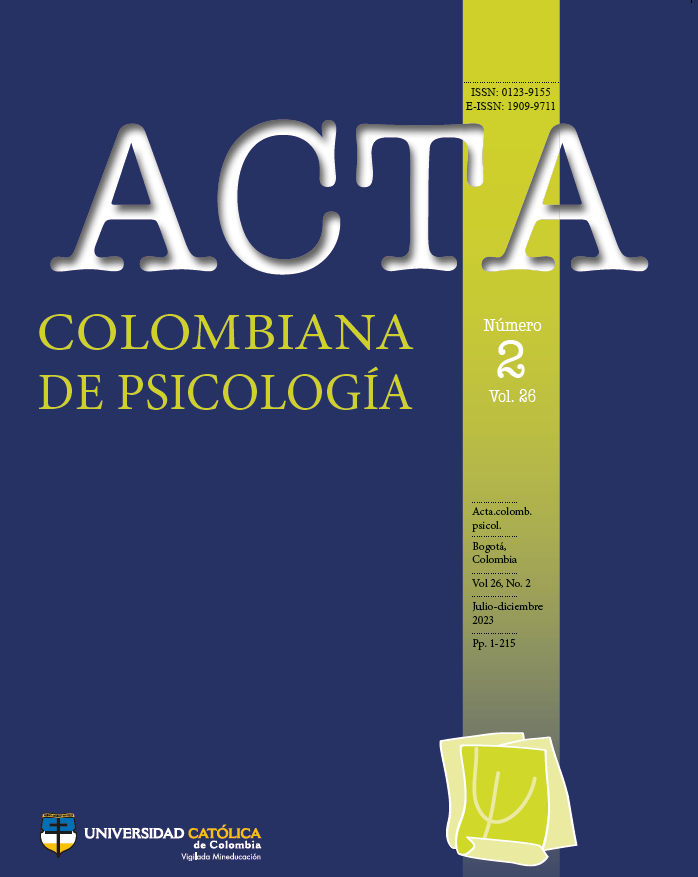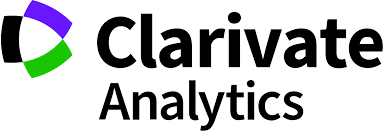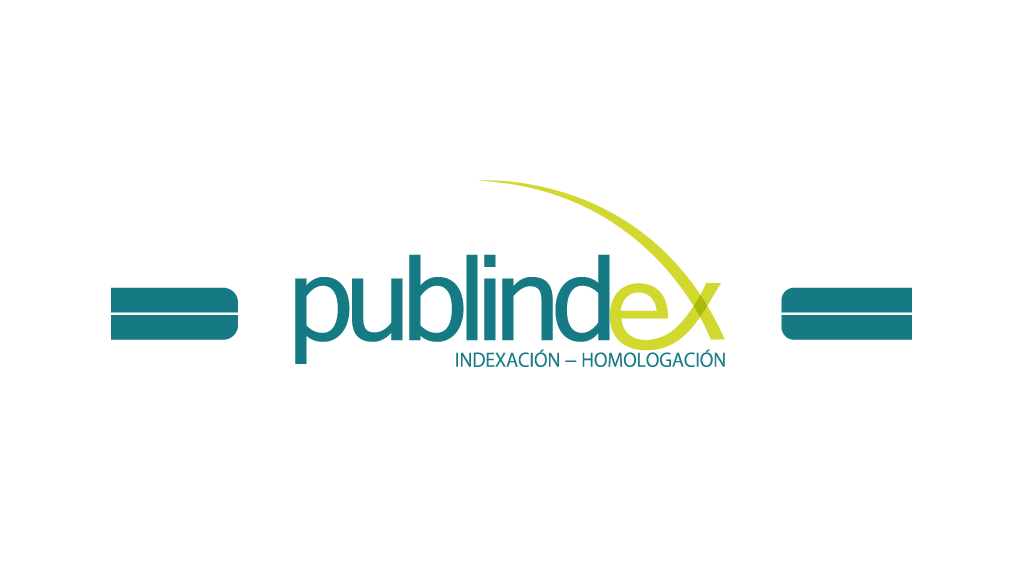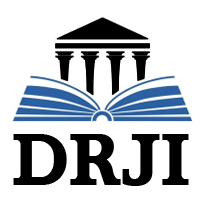
This work is licensed under a Creative Commons Attribution-NonCommercial-ShareAlike 4.0 International License.
Authors who publish in this journal agree to the following terms:
Acta Colombiana de Psicología complies with international intellectual property and copyright laws, and particularly with Article No. 58 of the Political Constitution of Colombia, Law No. 23 of 1982, and the Agreement No. 172 of September 30, 2010 (Universidad Católica de Colombia Intellectual Property Regulation).
Authors retain their copyright and grant to the Acta Colombiana de Psicología the right of first publication, with the work registered under Creative Commons attribution license, which allows third parties to use the published material, provided they credit the authorship of the work and the first publication in this Journal.
Abstract
Epistemic Curiosity (EC) is the desire that motivates people to acquire new knowledge. Litman’s EC scale was developed to operationalize this construct, and although its latent structure has been validated in several studies, these have been conducted mostly in Germany, the Netherlands, and the United States, which are educated, industrialized, wealthy, and democratic societies. Therefore, the present study evaluated the psychometric properties of the EC scale in a sample of adults from northwestern Mexico (N = 334) aged 18 to 50 years. As in previous research, two models were compared: one unidimensional and one bidimensional, using Confirmatory Factor Analysis. Additionally, significantly correlated residuals were included as part of both models, and it was examined whether the instrument has measurement invariance. The results show that the bifactor model presented the best fit. The internal consistency was acceptable, and the scale was found to have configural, metric, scalar, and strict invariance. Potential uses of this emerging construct include its study as a relevant motivational factor in students’ level of engagement and study strategies, as well as its mediating role in various types of learning anxiety.

References
American Educational Research Association, American Psychological Association, & National Council on Measurement in Education. (2014). The Standards for Educational and Psychological Testing. American Educational Research Association; American Psychological Association; National Council on Measurement in Education.
American Psychological Association [apa]. (2020). Guidelines for the practice of telepsychology. American Psychological Association.
Ato, M., López-García, J. J., & Benavente, A. (2013). Un sistema de clasificación de los diseños de investigación en psicología. Anales de Psicología, 29(3), 1038-1059. https://doi.org/10.6018/analesps.29.3.178511
Auerswald, M., & Moshagen, M. (2019). How to determine the number of factors to retain in exploratory factor analysis: A comparison of extraction methods under realistic conditions. Psychological Methods, 24(4), 468-491. https://doi.org/10.1037/met0000200
Bandalos, D. L. (2021). Item meaning and order as causes of correlated residuals in confirmatory factor analysis. Structural Equation Modeling: A Multidisciplinary Journal, 28(6), 903-913. https://doi.org/10.1080/10705511.2021.1916395
Barzilai, S., & Chinn, C. A. (2018). On the goals of epistemic education: Promoting apt epistemic performance. Journal of the Learning Sciences, 27(3), 353-389. https://doi.org/10.1080/10508406.2017.1392968
Berlyne, D. E. (1954). A theory of human curiosity. British Journal of Psychology. General Section, 45(3), 180-191. https://doi.org/10.1111/j.2044-8295.1954.tb01243.x
Bowen, N. K., & Guo, S. (2012). Structural equation modeling. Oxford University Press.
Chalmers, R. P. (2018). On misconceptions and the limited usefulness of ordinal alpha. Educational and Psychological Measurement, 78(6), 1056-1071. https://doi.org/10.1177/0013164417727036
Chen, F. F. (2007). Sensitivity of goodness of fit indexes to lack of measurement invariance. Structural Equation Modeling: A Multidisciplinary Journal, 14(3), 464-504. https://doi.org/10.1080/10705510701301834
Chinn, C. A., Barzilai, S., & Duncan, R. G. (2021). Education for a “post-truth” world: New directions for research and practice. Educational Researcher, 50(1), 51-60. https://doi.org/10.3102/0013189X20940683
DiStefano, C., McDaniel, H. L., Zhang, L., Shi, D., & Jiang, Z. (2019). Fitting large factor analysis models with ordinal data. EducationalandPsychologicalMeasurement, 79(3), 417-436. https://doi.org/10.1177/0013164418818242
Doğan, İ., & Özdamar, K. (2017). The effect of different data structures, sample sizes on model fit measures. Communications in Statistics-Simulation and Computation, 46(9), 7525-7533. https://doi.org/10.1080/03610918.2016.1241409
Domínguez-Lara, S. (2019). Correlation between residuals in confirmatory factor analysis: A brief guide to their use and interpretation. Interacciones. Revista deAvances en Psicología, 5(3), Article e207. https://doi.org/10.24016/2019.v5n3.207
Ferrando, P. J., Hernández-Dorado, A., & Lorenzo-Seva, U. (2022). Detecting correlated residuals in exploratory factor analysis: New proposals and a comparison of procedures. Structural Equation Modeling: A Multidisciplinary Journal, 29(4), 630-638. https://doi.org/10.1080/10705511.2021.2004543
Filzmoser, P., Ruiz-Gazen, A., & Thomas-Agnan, C. (2014). Identification of local multivariate outliers. Statistical Papers, 55(1), 29-47. https://doi.org/10.1007/s00362-013-0524-z
Flora, D. B. (2020). Your coefficient alpha is probably wrong, but which coefficient omega is right? A tutorial on using R to obtain better reliability estimates. Advances in Methods and Practices in Psychological Science, 3(4), 484-501. https://doi.org/10.1177/2515245920951747
Gonzáles-Bueno, J., Calvo-Cidoncha, E., Sevilla-Sánchez, D., Espaulella-Panicot, J., Cordina-Jané, C., & Santos-Ramos, B. (2017). Traducción y adaptación transcultural al español del cuestionario arms para la medida de adherencia en pacientes pluripatológicos. Atención Primaria, 49(8), 459-464. http://dx.doi.org/10.1016/j.aprim.2016.11.008
Heene, M., Hilbert, S., Draxler, C., Ziegler, M., & Bühner, M. (2011). Masking misfit in confirmatory factor análisis by increasing unique variances: A cautionary note on the usefulness of cutoff values of fit indices. Psychological Methods, 16(3), 319-336. https://doi.org/10.1037/a0024917
Heene, M., Hilbert, S., Freudenthaler, H. H., & Bühner, M. (2012). Sensitivity of sem fit indexes with respect to violations of uncorrelated errors. Structural Equation Modeling: A Multidisciplinary Journal, 19(1), 36-50. https://doi.org/10.1080/10705511.2012.634710
Huang, D., Wang, L., Zhou, M., & Zhang, J. (2010). Gender difference in motives of knowledge searching: Measurement invariance and factor mean comparison of the interest/deprivation epistemic curiosity. In 2010 IEEE 2nd Symposium on Web Society (pp. 258-263). IEEE.https://doi.org/10.1109/SWS.2010.5607444
Jorgensen, T. D., Pornprasertmanit, S., Schoemann, A. M., Rosseel, Y., Miller, P., Quick, C., Garnier-Villareal, M., Selig, J., Boulton, A., Preacher, K., Coffman, D., Rhemtulla, M., Robitzsch, A., Enders, C., Arslan, R., Clinton, B., Panko, P., Merkle, E., Chesnut, S., … & Johnson, A. R. (2021). semTools: Useful tools for structural equation modeling (R package version 0.5–5). cran. https://cran.r-project.org/web/packages/semTools/index.html
Kahan, D. M., Landrum, A., Carpenter, K., Helft, L., & Hall Jamieson, K. (2017). Science curiosity and political information processing. Political Psychology, 38, 179-199. https://doi.org/10.1111/pops.12396
Karandikar, S., Kapoor, H., & Litman, J. (2021). Why so curious? Validation and cross-cultural investigation of the Hindi Epistemic Curiosity Scale. Asian Journal of Social Psychology, 24(1), 69-82. https://doi.org/10.1111/ajsp.12425
Kashdan, T. B., & Silvia, P. J. (2009). Curiosity and interest: The benefits of thriving on novelty and challenge. In S. J. Lopez & C. R. Snyder (Eds.), Oxford handbook of positive psychology (pp. 367-374). Oxford University Press.
King-Kallimanis, B. L., Oort, F. J., Nolte, S., Schwartz, C. E., & Sprangers, M. A. (2011). Using structural equation modeling to detect response shift in performance and health-related quality of life scores of multiple sclerosis patients. Quality of Life Research, 20(10), 1527-1540. https://doi.org/10.1007/s11136-010-9844-9
Kline, R. B. (2015). Principles and practice of structural equation modeling (4th Edition). Guilford publications.
Korkmaz, S., Goksuluk, D., & Zararsiz, G. (2014). mvn: An R package for assessing multivariate normality. The R Journal, 6(2), 151-162. https://doi.org/10.32614/RJ-2014-031
Landrum, A. R., Olshansky, A., & Richards, O. (2021). Differential susceptibility to misleading flat earth arguments on Youtube. Media Psychology, 24(1), 136-165. https://doi.org/10.1080/15213269.2019.1669461
Litman, J. (2005). Curiosity and the pleasures of learning: Wanting and liking new information. Cognition & Emotion, 19(6), 793-814. https://doi.org/10.1080/02699930541000101
Litman, J. A. (2007). Curiosity as a feeling of interest and feeling of deprivation: The I/D model of curiosity. In P. R. Zelick (Ed.), Issues in the psychology of motivation (pp. 149-156). Nova Science Publishers.
Litman, J. A. (2008). Interest and deprivation factors of epistemic curiosity. Personality and Individual Differences, 44(7), 1585-1595. https://doi.org/10.1016/j.paid.2008.01.014
Litman, J. (2019). Curiosity: Nature, dimensionality, and determinants. In K. A. Renninger & S. E. Hidi (Eds.), The Cambridge handbook of motivation and learning (pp. 418-442). Cambridge University Press. https://doi. org/10.1017/9781316823279.019
Litman, J. A., & Jimerson, T. L. (2004). The measurement of curiosity as a feeling of deprivation. Journal of Personality Assessment, 82(2), 147-157. https://doi.org/10.1207/s15327752jpa8202_3
Litman, J. A., & Mussel, P. (2013). Validity of the interest and deprivation type epistemic curiosity model in Germany. Journal of Individual Differences, 34(2), 59-68. https://doi.org/10.1027/1614-0001/a000100
Litman, J. A., Crowson, H. M., & Kolinski, K. (2010). Validity of the interest-and deprivation-type epistemic curiosity distinction in non-students. Personality and Individual Differences, 49(5), 531-536. https://doi.or-g/10.1016/j.paid.2010.05.021
Lobato, E., Mendoza, J., Sims, V., & Chin, M. (2014). Examining the relationship between conspiracy theories, paranormal beliefs, and pseudoscience acceptance among a university population. Applied CognitivePsychology, 28(5), 617-625. https://doi.org/10.1002/acp.3042
Loewenstein, G. (1994). The psychology of curiosity: A review and reinterpretation. Psychological Bulletin, 116(1), 75-98. https://doi.org/10.1037/0033-2909.116.1.75
McNeish, D. (2018). Thanks coefficient alpha, we’ll take it from here. Psychological Methods, 23(3), 412-433. https://doi.org/10.1037/met0000144
McNeish, D., & Wolf, M. G. (2021). Dynamic fit index cutoffs for confirmatory factor analysis models. Psychological Methods. Advance online publication. https://doi.org/10.1037/met0000425
Molina, M. D., Wang, J., Sundar, S. S., Le, T., & DiRusso, C. (2022). Reading, commenting and sharing of fake news: Howonlinebandwagonsandbotsdictateuserengagement. Communication Research, Article 00936502211073398. https://doi.org/10.1177/00936502211073398
Mosleh, M., Pennycook, G., Arechar, A. A., & Rand, D. G. (2021). Cognitive reflection correlates with behavior on Twitter. Nature Communications, 12(1), 1-10. https://doi.org/10.1038/s41467-020-20043-0
Orona, G. A., & Pritchard, D. (2022). Inculcating curiosity: Pilot results of an online module to enhance undergraduate intellectual virtue. Assessment & Evaluation in Higher Education, 47(3), 375-389. https://doi.org/10.1080/02602938.2021.1919988
Pascual-Ferrá, P., & Beatty, M. J. (2015). Correcting internal consistency estimates inflated by correlated item errors. Communication Research Reports, 32(4), 347-352. https://doi.org/10.1080/08824096.2015.1089858
Piotrowski, J. T., Litman, J. A., & Valkenburg, P. (2014). Measuring epistemic curiosity in young children. Infant and Child Development, 23(5), 542-553. https://doi.org/10.1002/icd.1847
Putnick, D. L., & Bornstein, M. H. (2016). Measurement invariance conventions and reporting: The state of the art and future directions for psychological research. Developmental Review, 41, 71-90. https://doi.org/10.1016/j.dr.2016.06.004
Reyes-Sosa, H., & Molina-Coloma, V. (2018). Análisis psicométrico de una escala para medir el miedo al delito en jóvenes ecuatorianos. Acta colombiana de Psicología, 21(1), 290-299. https://doi.org/10.14718/ACP.2018.21.1.13
Rosseel, Y. (2012). Lavaan: An R Package for structural equation modeling. Journal of Statistical Software, 48(2), 1-36. https://doi.org/10.18637/jss.v048.i02
Rutkowski, L., & Svetina, D. (2014). Assessing the hypothesis of measurement invariance in the context of large-scale international surveys. Educational and Psychological Measurement, 74(1), 31-57. https://doi.org/10.1177/0013164413498257
Sánchez-Villena, A. R., Cedrón, E. F., De-la-Fuente-Figuerola, V., & Chávez-Ravines, D. (2022). Estructura factorial y datos normativos del Inventario de Depresión de Beck (BDI-II) en población general peruana. Acta Colombiana de Psicología, 25(2), 158-170. https://doi.org/10.14718/ACP.2022.25.2.10
Sarstedt, M., Bengart, P., Shaltoni, A. M., & Lehmann, S. (2018). The use of sampling methods in advertising research: A gap between theory and practice. International Journal of Advertising, 37(4), 650-663. https://doi.org/10.1080/02650487.2017.1348329
Sellbom, M., & Tellegen, A. (2019). Factor analysis in psychological assessment research: Common pitfalls and recommendations. Psychological Assessment, 31(12), 1428-1441. https://doi.org/10.1037/pas0000623
Shi, D., Maydeu-Olivares,A.,& Rosseel,Y. (2020).Assessing fit in ordinal factor analysis models: srmr vs. rmsea. Structural Equation Modeling: A Multidisciplinary Journal, 27(1), 1-15. https://doi.org/10.1080/10705511.2019.1611434
Sideridis, G. D., & Jaffari, F. (2022). An R function to correct fit indices and omnibus tests in confirmatory factor analysis. Measurement and Evaluation in Counseling and Development, 55(1), 48-70. https://doi.org/10.1080/07481756.2021.1906159
Sierra, F. A., Sánchez, R., & Ibáñez, C. (2013). Adaptación transcultural de la escala Daily Spiritual Experience Scale para su uso en Colombia. Revista Colombiana de Cancerología, 17(4), 149-157. https://doi.org/10.1016/S0123-9015(13)70162-8
Smaldino, P. E., Lukaszewski,A., Von Rueden, C., & Gurven, M. (2019). Niche diversity can explain cross-cultural differences in personality structure. Nature Human Behaviour, 3(12), 1276-1283. https://doi.org/10.1038/s41562-019-0730-3
Sociedad Mexicana de Psicología. (2010). Código ético del psicólogo. Trillas.
Streiner, D. l., & Norman G. R. (2008). Health measurement scales. A practical guide to their development and use. Oxford University Press.
Van de Schoot, R., Lugtig, P., & Hox, J. (2012). A checklist for testing measurement invariance. European Journal of Developmental Psychology, 9(4), 486-492. https://doi.org/10.1080/17405629.2012.686740
Verhulst, B., & Neale, M. C. (2021). Best practices for binary and ordinal data analyses. Behavior Genetics, 51(3), 204-214. https://doi.org/10.1007/s10519-020-10031-x
Wahl, A. K., Hermansen, Å., Tschamper, M. B., Osborne, R. H., Helseth, S., Jacobsen, R., & Larsen, M. H. (2022). The Parent Health Literacy Questionnaire (HLQ-Parent). Adaptation and validity testing with parents of children with epilepsy. Scandinavian Journal of Public Health, Article 14034948221123436. https://doi.org/10.1177/14034948221123436
Wootton, A. R., Rice, D. R., McKowen, A. L. W., & Veldhuis, C. (2022). A mixed-methods and prospective approach to understanding coping behaviors, depression, hopelessness, and acute stress in a us convenience sample during the covid-19 pandemic. Health Education & Behavior, 49(2), 219-230. https://doi.org/10.1177/10901981221084272
Xia, Y., & Yang, Y. (2019). RMSEA, CFI, and TLI in structural equation modeling with ordered categorical data: The story they tell depends on the estimation methods. Behavior Research Methods, 51(1), 409-428. https://doi.org/10.3758/s13428-018-1055-2
Zhang, Y., Zhou, M., Shao, Y., & Zhang, M. Y. (2020). mv-normal Test: Powerful Tests for Multivariate Normality. cran. https://CRAN.R-project.org/package=mvnormalTest
































